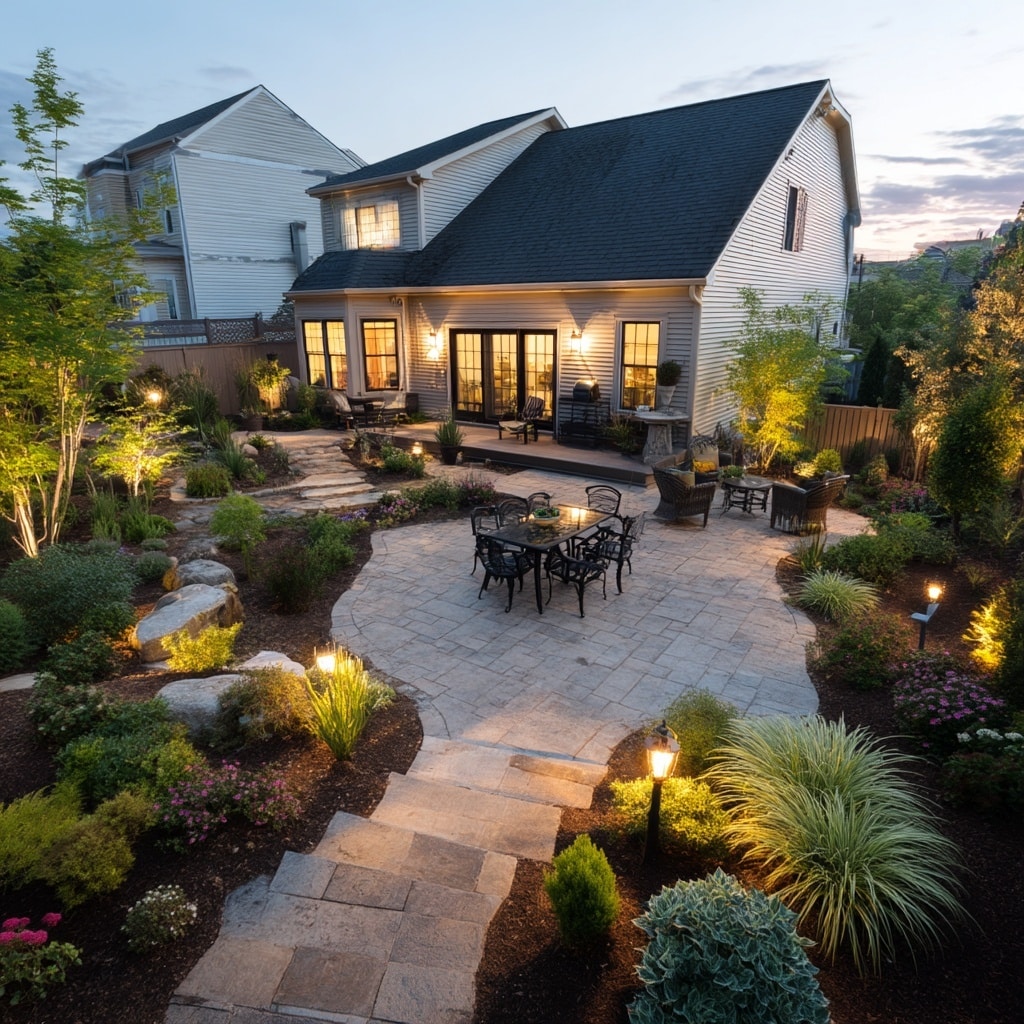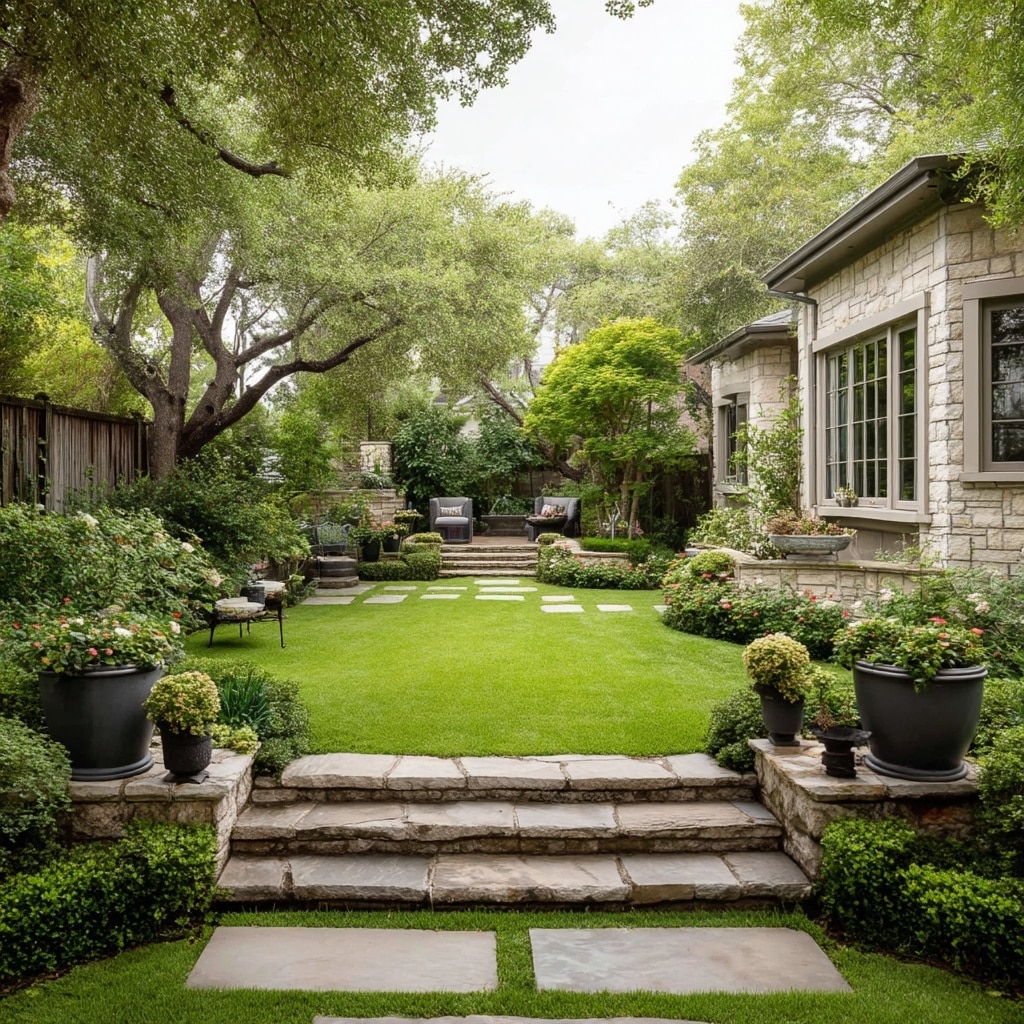Land scape design ideas are what transform a simple outdoor space into a personal sanctuary that invites relaxation, beauty, and purpose. When you bring fresh landscape design ideas into your yard, you’re not just planting shrubs or arranging stones—you’re crafting an environment that reflects your style, supports your lifestyle, and works in harmony with your home and site. Whether you’re working with a cozy suburban lot or a sprawling garden, understanding the fundamentals of landscape design ideas will empower you to move forward with clarity and confidence.
Table of Contents
1. Understand the Basic Principles of Landscape Design
Before diving into planting or hardscaping, it’s essential to learn the guiding principles behind great landscape design ideas. These timeless rules help ensure your yard feels cohesive, balanced, and visually appealing.
Balance
Balance is about creating visual stability. Use symmetry for a classic, formal look—like matching trees or planters on either side of an entryway—or go asymmetrical for a more natural, relaxed flow that still feels intentional.
Proportion
Keep the size of plants, furniture, and garden structures in proportion to your home and yard. Large trees can overpower small yards, while tiny shrubs can get lost in open spaces.
Rhythm and Repetition
Repeating certain plants, colors, or textures throughout the garden helps guide the eye and create harmony. Think of repeating lavender borders or stone pathways that subtly tie the space together.
Unity
Every part of your yard should connect visually and functionally. Paths should lead naturally to seating areas, flower beds should complement the architecture, and materials should feel consistent.
Contrast
Use contrast to make elements pop. Combine fine-textured plants with bold-leaved ones, light flowers with dark foliage, or smooth stones with rough bark mulch.
2. Planning Your Landscape Layout
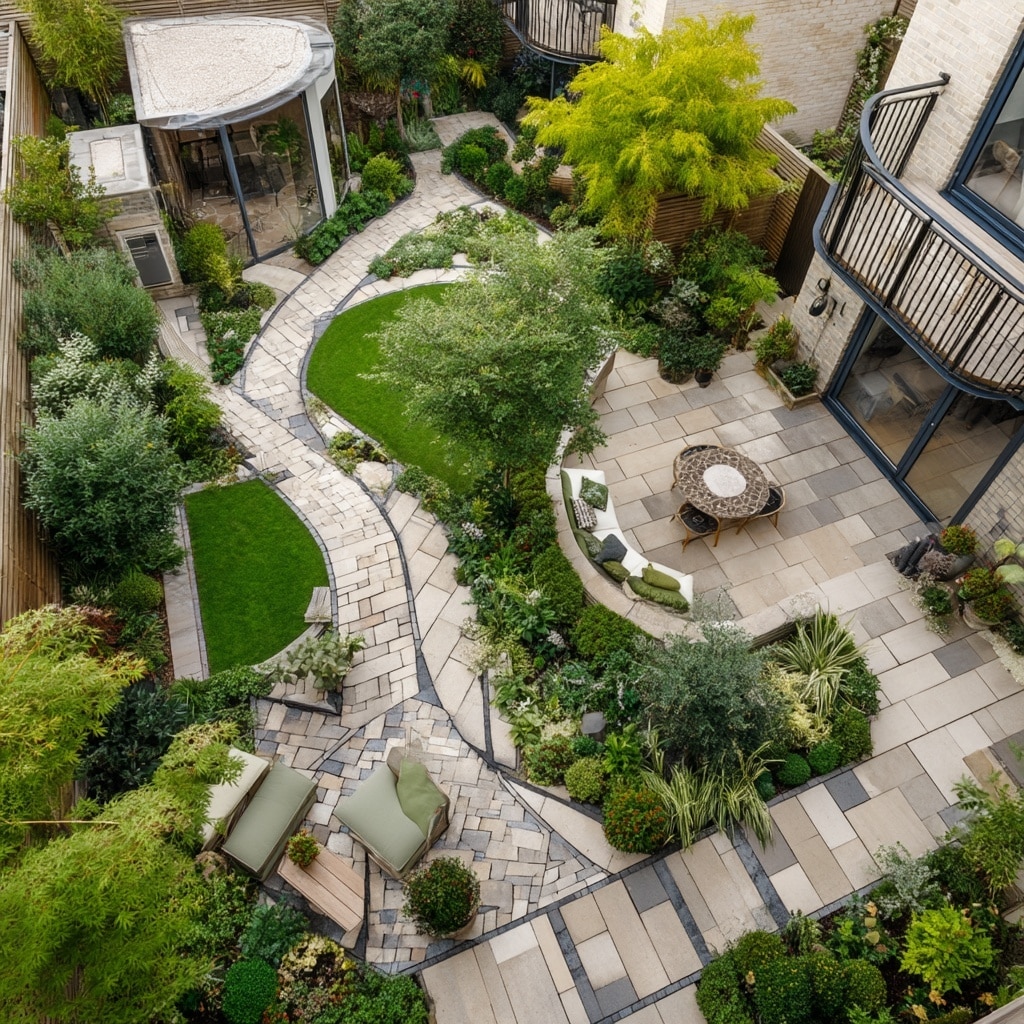
Once you understand the basics, it’s time to plan how your landscape design ideas will come together on the ground. A thoughtful layout ensures every feature has purpose, balance, and flow.
Assess Your Space
Start by observing how sunlight, shade, and moisture affect different areas of your yard. Note where water tends to collect, how much wind your space gets, and which areas receive full sun. These natural factors determine where plants will thrive and how your layout should be structured.
Define Functional Zones
Divide your yard into zones—such as a lounging area, vegetable garden, play space, or pathway garden. Each zone should serve a clear purpose and connect naturally to the others.
Create Focal Points
A strong focal point draws attention and provides structure. It could be a flowering tree, a water feature, or even a statement sculpture. Use one or two focal points per view to keep the eye engaged without cluttering the space.
Plan for Movement
Paths and walkways should lead visitors smoothly from one zone to another. Curved paths add a sense of discovery, while straight lines give a formal, structured look.
Consider the View from Indoors
Design your garden so that every window offers a beautiful outdoor view. A well-placed planter, birdbath, or hedge can make a big difference in your home’s interior atmosphere as well.
3. Choosing the Right Plants for Your Landscape Design
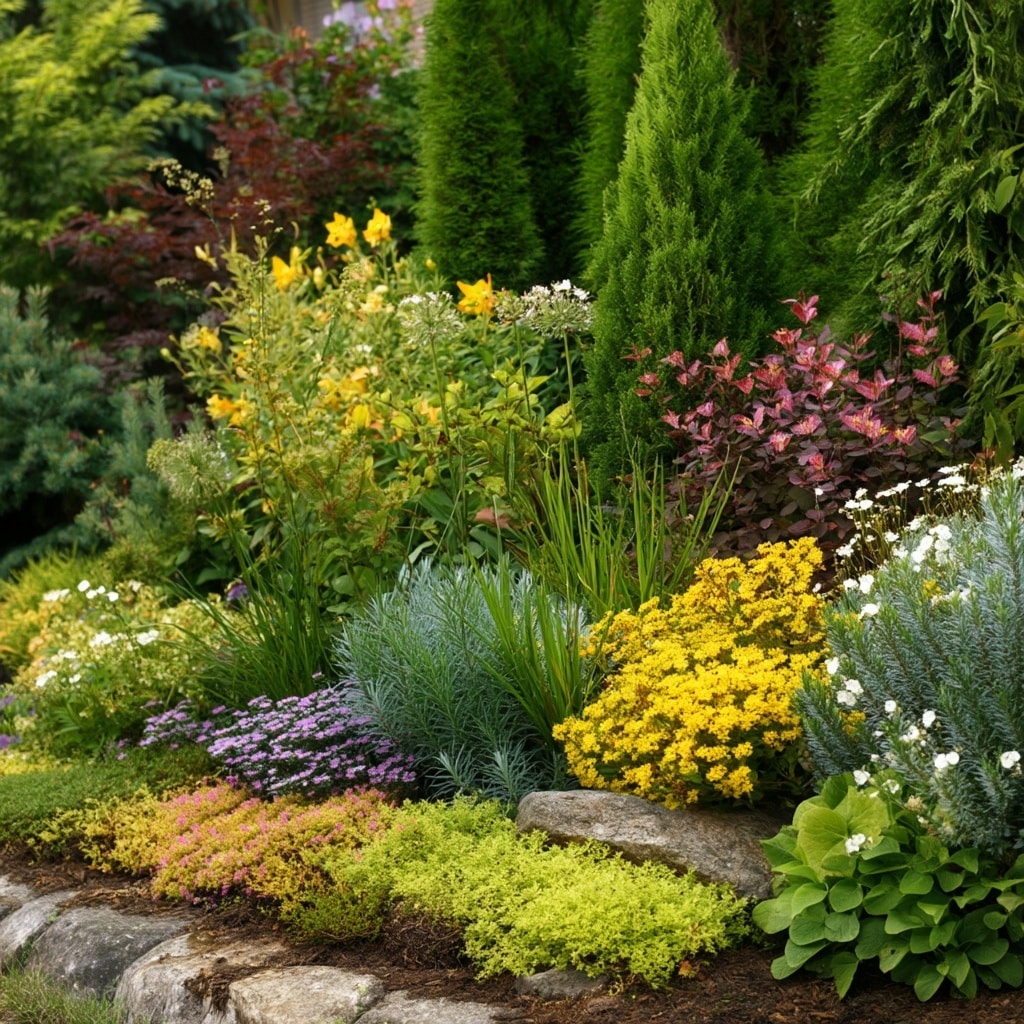
Plants are the foundation of all landscape design ideas, setting the tone, texture, and seasonal rhythm of your garden. The right combination not only enhances beauty but also supports sustainability and ease of maintenance.
Match Plants to Your Climate and Soil
Always choose plants that thrive in your region’s conditions. Native plants are excellent options—they’re adapted to local weather, require less water, and attract pollinators like butterflies and bees. Test your soil’s pH and texture before planting to select species that will flourish naturally.
Layer for Depth and Visual Interest
Think in layers: tall trees and shrubs in the back, medium-sized perennials in the middle, and low-growing groundcovers or border flowers in front. This layering creates dimension and a lush, full look.
Focus on Color and Texture
Combine plants with varied leaf textures—smooth, glossy, or feathery—and colors that complement each other. For example, pairing silver-green sage with deep purple salvia and bright yellow marigolds adds visual excitement.
Plan for Year-Round Appeal
Select a mix of plants that bloom or show color in different seasons. Evergreens add winter structure, spring bulbs bring early color, and summer perennials keep things vibrant.
Mind the Maintenance
Be realistic about how much time you can spend caring for your garden. Low-maintenance options like ornamental grasses, lavender, or hostas make life easier while keeping your yard beautiful.
4. Incorporating Hardscape Elements
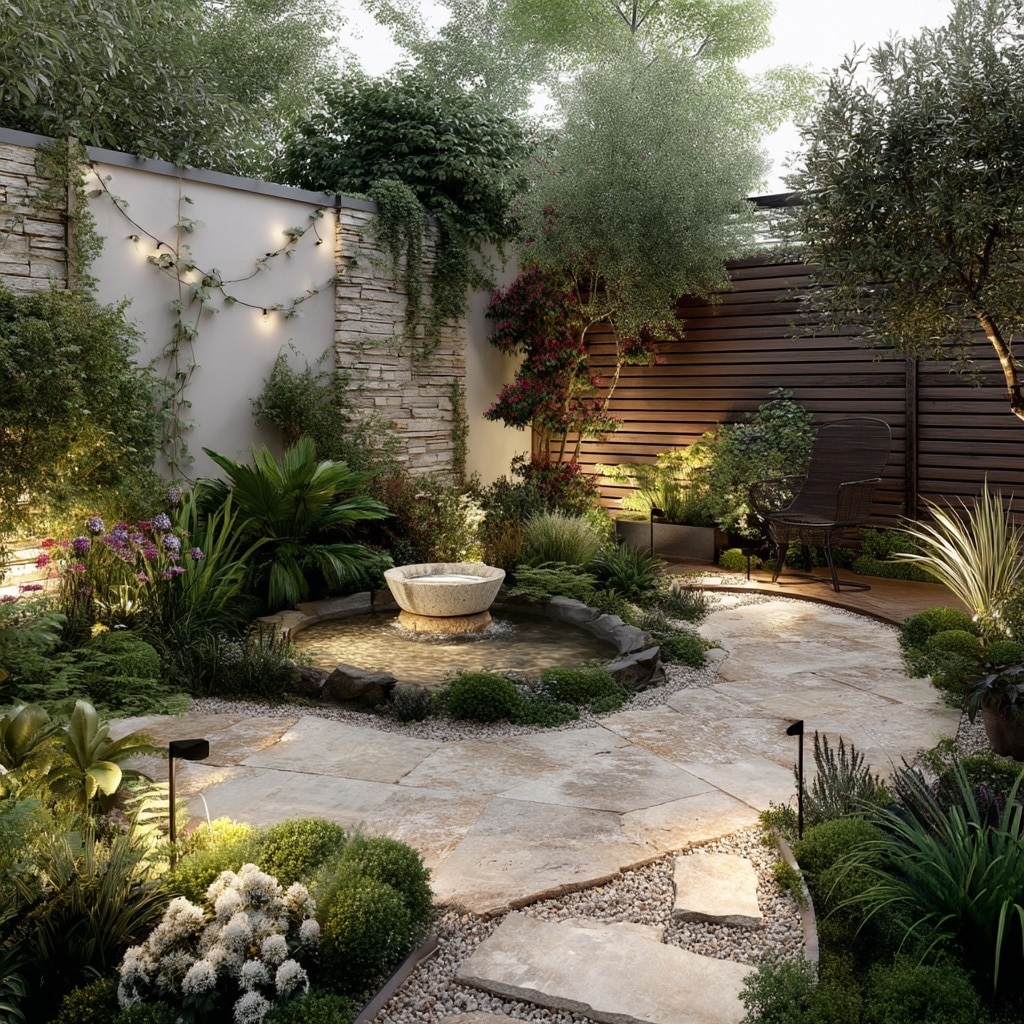
The best landscape design ideas balance plants with hardscape features—non-living elements like stone paths, patios, and garden structures. These add function, form, and definition to your yard while tying all design elements together.
Paths and Walkways
A well-designed path creates flow and invites exploration. Use materials such as flagstone, gravel, or brick to complement your home’s style. Keep pathways wide enough for comfort—typically at least 3 feet—and gently curve them for a more natural feel.
Patios and Seating Areas
A patio extends your living space outdoors. Position it to capture morning sun or afternoon shade depending on your climate. Add cozy seating, planters, and perhaps a fire pit to make it a welcoming retreat.
Retaining Walls and Garden Borders
Use stone, timber, or concrete blocks to define flower beds, manage slopes, or create elevated garden zones. A retaining wall can add texture and structure while preventing soil erosion.
Water Features
Incorporate the soothing sound of water with a small pond, fountain, or birdbath. Even a simple ceramic bowl fountain adds tranquility and draws wildlife.
Lighting
Outdoor lighting enhances both safety and beauty. Place soft, warm lights along walkways, around focal plants, or near seating areas to extend the enjoyment of your garden into the evening.
5. Tips for a Sustainable and Low-Maintenance Landscape Design
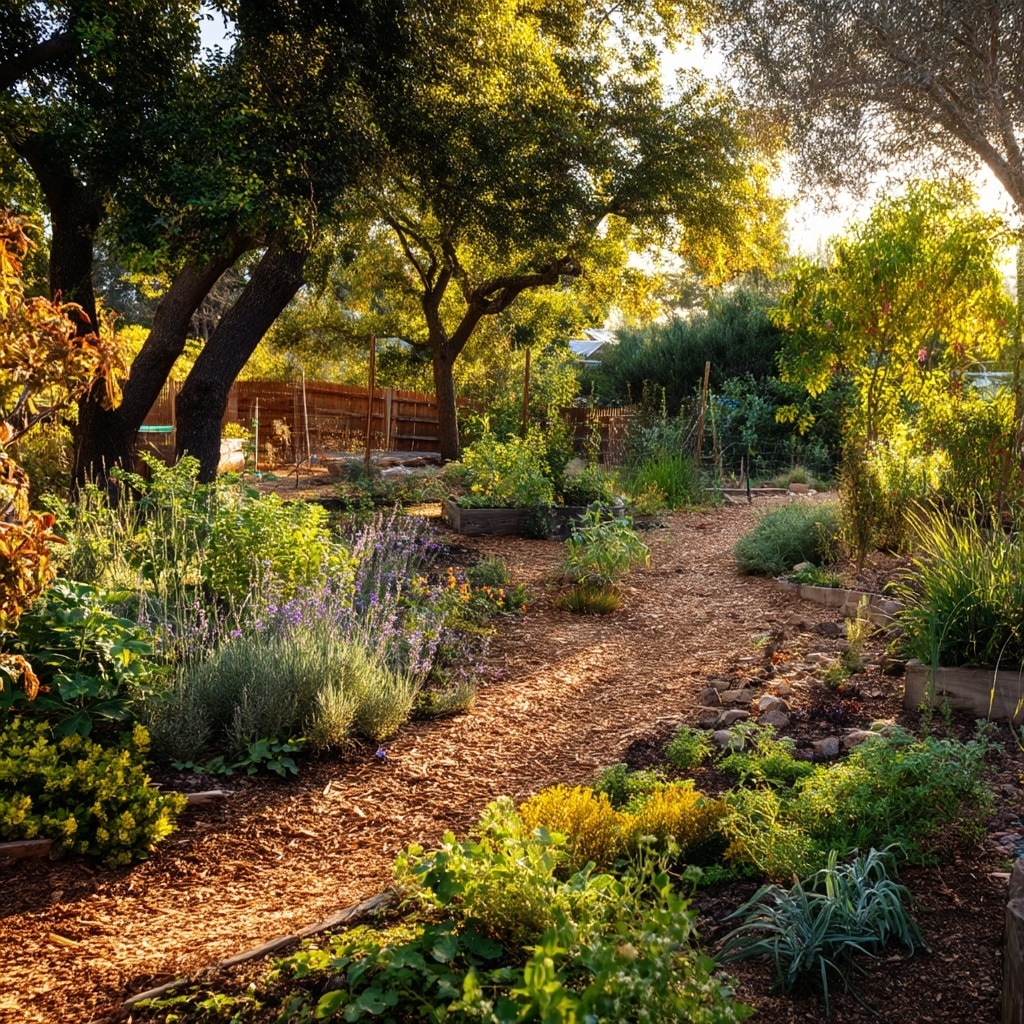
Modern landscape design ideas don’t just focus on beauty—they also aim for sustainability, efficiency, and minimal upkeep. Designing with nature in mind helps reduce water use, chemical dependency, and long-term maintenance.
Choose Drought-Tolerant Plants
Opt for hardy, drought-resistant species such as sedum, coneflower, or lavender. These plants require minimal watering once established, helping conserve resources and reduce effort.
Use Mulch Wisely
Mulch retains soil moisture, suppresses weeds, and enriches the soil as it breaks down. Spread 2–3 inches of organic mulch around plants, keeping it a few inches away from stems to prevent rot.
Install Smart Irrigation
Drip irrigation systems deliver water directly to the root zone, reducing waste and preventing leaf disease. You can also use moisture sensors to automate watering schedules efficiently.
Compost Yard Waste
Turn leaves, grass clippings, and kitchen scraps into nutrient-rich compost for your garden. It’s a natural way to improve soil health and cut down on landfill waste.
Embrace Native and Pollinator-Friendly Plants
Integrating native species attracts beneficial insects, bees, and butterflies while keeping your garden ecosystem balanced.
6. Bringing It All Together: Creating Your Ideal Landscape
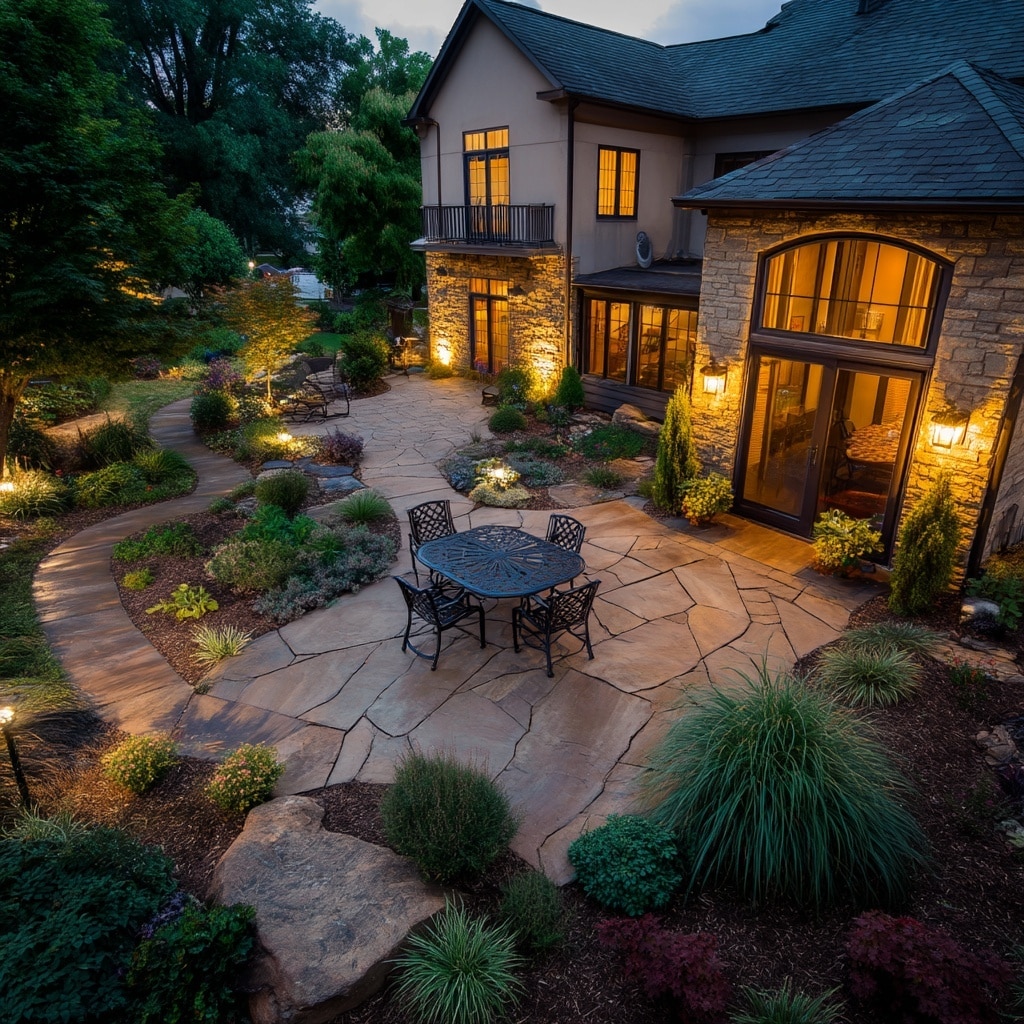
With all these landscape design ideas in mind, your next step is to put them into action—one thoughtful decision at a time. Whether your goal is a cozy backyard retreat, a pollinator-friendly garden, or a modern outdoor entertaining space, success comes from balance, planning, and creativity.
Start small. Begin with one area, like your front entryway or patio garden, and refine your approach as you gain confidence. Combine plant textures, hardscape materials, and focal points that match your home’s personality. Over time, your outdoor space will evolve into a cohesive reflection of your taste and lifestyle.
Remember: the best landscape design is not just about looks—it’s about how it makes you feel. When your garden feels inviting, peaceful, and functional, you’ve achieved the essence of great design.
Conclusion
Landscape design ideas are the foundation of any beautiful outdoor space. By following these principles—balance, flow, sustainability, and creativity—you can turn even the simplest yard into a personal haven. Whether you’re a first-time gardener or a seasoned homeowner, start today with a clear plan and a vision for how you want to live outdoors.

